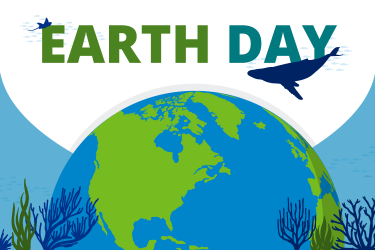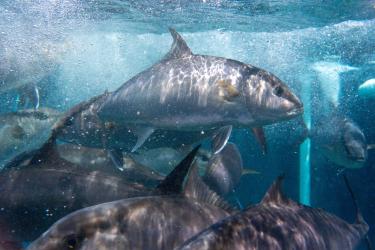Underwater habitat, includes shallow coral, oyster reefs, and deep-sea coral. Many commercially important fish species depend on these habitats for food and shelter. They also support tourism and protect coastlines, but these habitats are threatened by rising ocean temperatures, pollution, and other factors. Learn more about how NOAA works to conserve these important underwater habitats.
Underwater Habitat Highlights
More Oysters: Good for the Chesapeake Bay, Good for People
Oysters play many important roles in the Chesapeake Bay. They are a valuable fishery that supports both significant cultural heritage and emerging aquaculture interests. But they also provide critical benefits to the Bay ecosystem—they filter and remove excess nutrients like nitrogen from the water and they grow in reefs that provide habitat for fish and crabs. People are now realizing the many ways in which oyster reefs support not only the ecosystem, but the economy. Learn more about how oyster restoration in the Chesapeake Bay benefits both the ecosystem and the economy

A clump of several healthy oysters from a restored reef in Harris Creek, Maryland.
Shallow Coral Reef Habitat
Coral reefs are underwater structures built by tiny sea animals. Hard corals, which have a stone-like skeleton, grow into reefs on the edges of tropical islands and continents. Their beautiful shapes and colors are a magnet for divers, but they also provide an excellent home for thousands of marine creatures, including fish we love to eat. Learn more about shallow coral reef habitat

Coral reef in American Samoa.
Deep-Sea Coral Habitat
You might think of corals and picture a sunny and shallow tropical reef. Yet recent advances in deep ocean exploration have revealed spectacular coral gardens in the dark ocean depths. Hundreds—and even thousands—of feet beyond the reach of sunlight, these unique corals and sponges are found off all our coasts. Ongoing exploration reveals new and familiar species thriving where we once expected little activity. These special creatures have already yielded new science, including medicines. They thrive in the largest yet least known environment on Earth: the deep sea. Learn more about deep-sea coral habitat

Red tree corals are a focal point of the Deepwater Exploration of Glacier Bay National Park Expedition. These corals have been shown to be the foundation of diverse deepwater communities in Alaska. And can occur as shallow as 6 meters.
Oyster Reef Habitat
Oysters live in salty or brackish waters on all U.S. coasts, clustering on older shells, rock, piers, or any hard, submerged surface. They fuse together as they grow, forming rock-like reefs that provide habitat for other marine animals and plants. Learn more about oyster reef habitat

Fresh oysters from Kachemak Bay oyster mariculture operations, Homer, Alaska.
NOAA Habitat Science Plays Important Roles in Oyster Reef Restoration
Chesapeake Bay oyster restoration efforts rely on sonar surveys, habitat mapping, and monitoring for success. Learn more about NOAA's role in oyster reef restoration

NOAA scientist deploys visual inspection equipment.
Fighting for Coral: Force Blue Coral Response Highlights NOAA Vet Training Programs
A partnership between NOAA, FEMA, nonprofits and a local enterprise is one of many engaging military veterans and restoring important ecosystems—this time helping revive coral reefs in the Caribbean. Learn more about Force Blue coral response

Force Blue diver at Mosquito Reef, Vieques works to collect a coral head broken off its base, for reattachment.
Learn more about Deep-Sea Corals through 5 Story Maps
Visit a series of story maps exploring deep-sea coral. Check out story maps on deep-sea corals

An orange basket star covers a Picasso sponge at Davidson Seamount, California.
Underwater Habitat Videos
Repairing the Reef: West Hawai’i Focuses on Habitat
On Hawai’i Island, NOAA is partnering with The Nature Conservancy, local communities, government agencies, non-profit organizations and businesses to restore habitat and improve coral reef health along with other natural and cultural resources.
Coral Restoration
Staghorn and elkhorn coral, which are the building blocks of reefs in the Caribbean and Florida Keys, have become threatened species. NOAA and its partners started a coral restoration effort to transplant and restore thousands of coral colonies.
Coral Economy
The coral reef economy is bigger than you think. Watch this video to learn more about the coral reef economy




